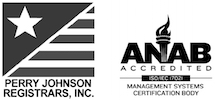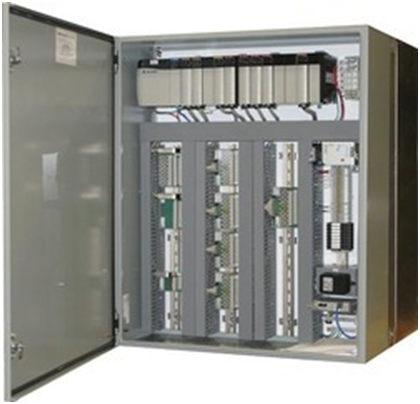Essentials of Automated Control Panel Design
From a single control panel design to comprehensive, mission-critical systems, computer-aided engineering (CAE) applications have enjoyed wide-scale use over the past three decades. Whether CAE is used for design automation, multidisciplinary design optimization, thermal analysis or simulation, electrical and mechanical engineers have long benefited from its use through greater efficiency and more repeatable, accurate and optimized designs. In many facilities today, the design, manufacturing and logistic phases of control panel design are optimized individually. However, the fourth industrial revolution, Industry 4.0 (Industrial Internet of Things (IIoT)) , is expanding the reach of today’s advanced CAE tools while tying together the value-added chain in the factory to value adding networks outside the factory. Today’s CAE is integrating the value-added chain from sales and planning to engineering and manufacturing, establishing and automating efficient, cost-effective processes and workflow with maximum flexibility and increased productivity. All phases of the value-added chain are becoming smarter and working more intelligently. The first three industrial revolutions—use of water/ steam power (18th century), use of electricity (19th century) and use of computers (20th century)—greatly advanced industrial applications, mass production of goods and automation of production. The digitization of production to maximize flexibility and the optimization of resource usage and efficiency is the heart of Industry 4.0. As the use and understanding of cloud computing and the IIoT technology grows, so does the smart factory. In the smart factory, everything is connected—not just the machines, but the corporate information systems, the humans who rely on them and other smart factories. Combine advanced CAE with modular components and automated control panel design and manufacture is available, affordable and repeatable. This includes all aspects, from the planning, the electrical design and the mechanical mounting layout to manual or automated production, assembly and commissioning at the customer site.
Control Panel’s 4.0 Workflow
Advanced CAE can improve workflow during development, planning and design of a control panel. When the order is received, integrated planning and project management can then feed the customer’s control panel requirements to engineering who in turn feed consistent data to production. Even with a batch size of one control panel, the new CAE technology automates the workflow across the complete smart-factory supply chain. Automation of these planning, routing, control-cabinet-engineering and 3D-visualization functions feeds the integrated factory floor. Customers are demanding quick delivery, customized designs and high-quality hardware and documentation. They want it all at the lowest price. A quantity of one or small lot sizes add to the challenges of efficient manufacturing. Because of this, it is necessary to improve process quality by restructuring the data workflows in the value-added supply chain in product development and design through manufacture and delivery. Continuity and consistency of data and systems starting with engineering, technical order preparation, material logistics, production and assembly and continuing through setup and commissioning at the customer site is the goal. A CAE-improved workflow and business processes can also create productivity gains by integrating the design approach. This integration allows parallel yet well-coordinated workflow. For example, instead of the engineers working sequentially, integrated automation design tools within CAE allow electrical, fluid power and process instrumentation engineers to work simultaneously and share well-controlled data. This integrated and built-in workflow coordination enables the engineering team to closely collaborate at different sites and with customers, suppliers and system integrators. To ensure this up-to-date data, CAE integration to product data management (PDM) is an important part of workflow from the initial sales through service and maintenance. Having all the data needed ensures the control cabinet is priced correctly, engineers have the appropriate information for design and manufacturing has the parts list and drawings necessary to build the cabinet. And as time passes, the service technician can access the latest data when necessary. Having accurate data readily available improves quality, and reduces engineering and manufacturing times. The advanced capabilities of integrated CAE tools not only make the restructured workflows of individual engineers and collaborative teams more productive, but they can automate elements of the design process itself.
Control Panel’s 4.0 Design
The use of CAE for control panel design and manufacture in the Industry 4.0 era removes engineering from its isolated island. With Industry 4.0, engineering is digitally connected to planning, purchasing, manufacturing and logistics. If data, such as a bill of materials or detail drawings are revised, everything downstream is updated, as well. All information is shared, in real time, with fewer opportunities for errors and with easier changes. In cases where control panel design originates from an isolated engineering island, a bill of materials document is created and delivered to purchasing, which then purchases the hardware based on the document. The manufacturing floor and shipping use the same document with possibly obsolete information unless carefully controlled and revised. CAE using the Industry 4.0 approach, with end-to-end engineering tools, provides consistent standardization across systems. Whether at the factory, at a remote site or at a sister factory, users can select, place and connect hardware, components and wires in to a schematic and quickly create a panel layout using a predefined and automated design process. Integration of these engineering tools and an automated design process with ERP also improves efficiencies. For example, as the components are selected, delivery time and product availability can be checked along with cost, installation, assembly and wiring times. Legacy CAD tools typically require manual entry of data, cross-referencing and error-checking by the design engineer every time a new design is created. With the inevitable customer-requested modifications, this can be very time-consuming, low value work. Just changing a motor size or contactor could change the power distribution, safety contactor, I/O, panel layout or parts list. With CAE using components and structures designed, tested and certified by component manufacturers in advance, design moves quickly. Web-based repositories of manuals, subassemblies, part drawings, part images and configurable intelligent devices make selection of the standard, correct components a quick process. If design work typically requires a variety of modifications to the same product or design, the ability to archive and reuse standard, certified data provides significant efficiency improvements. Although the standard components and structures must be defined in advance, the effort pays off through the ability to automate the electrical engineering of more than 50% of the control-panel design. The design guidelines created in the process ensure maximum transparency and consistent design and quality in the schematics. Electrical or fluid schematics can thus be generated automatically at the click of a button. Control-panel design firms benefit from this automation strategy in several ways:
- Sets of rules secure the know-how at a central location.
- Automation of the documentation reduces the lead times and labor considerably.
- Automated mechanical engineering enables 3D assembly.
The automation of the panel-layout creation is another time saver. Following defined rules built in to the CAE tool and using additional rules and standards created by the user reduces lead times and labor involved with panel-layout design. The benefits of advanced CAE extend to manufacturing, reducing manufacturing costs and boosting productivity.
Control Panel’s 4.0 Machining
With the design finalized, the CAE system automatically generates a complete electrical and mechanical drawing package for manufacturing that includes all wiring diagrams, bill of materials and assembly diagrams, and it can even generate automated setups for custom enclosures, back panel drilling and wire processing. Digitization of the value chain allows multiple companies to work together to automate repeating processes and manufacturing, and it enables revision of data on the fly. With CAE systems, control-panel design and manufacture proceeds quickly and accurately due to the integrated value-added chain. As work progresses, data (assembly drawings, detail drawings, bill of materials and automated setups) is automatically updated in real time across the value-chain. Changes are seamlessly communicated to the entire workflow participants so last-minute changes are possible and are automatically incorporated using a variety of intelligent file formats such as smart PDFs and other electronic file methods. Automation is advanced yet simplified by feeding automatically generated and up-to-date setups to CNC processing equipment, machining centers or wire processing machines both locally and at external suppliers. In most control-panel design and fabrication shops, it is common to manually lay out and cut the pushbutton, HMI and enclosure-mounted devices and then manually drill or cut the holes, which can be very time-consuming and loud. The same is true for panel layouts. All the parts must be placed on the bland back panel per the panel layout and the holes marked and drilled, which is another time consuming process. With CAE, not only can the layouts be automatically generated, the CNC setup for custom enclosures, enclosure cutouts and panel drill programs, and wire processing machines feed, cut, strip and trim schedules can be automatically created, as well. Connecting with a smart-factory CNC shop makes this possible. Whether it is a single custom panel or a batch of 1,000, significant time is saved during enclosure manufacturing and panel assembly. The project lifecycle for advanced CAE and Industry 4.0 control-panel design will only get better. An improved and integrated workflow including project development, planning, design, purchasing and manufacture will reduce costs and boost productivity across this value chain. Applying this advanced computer-aided design to engineering and manufacturing can automate processes from design of power distribution, communication networks, I/O and panel layouts to a significant portion of control-panel manufacturing such as enclosure modifications, panel layouts, cable runs and wire routing.






